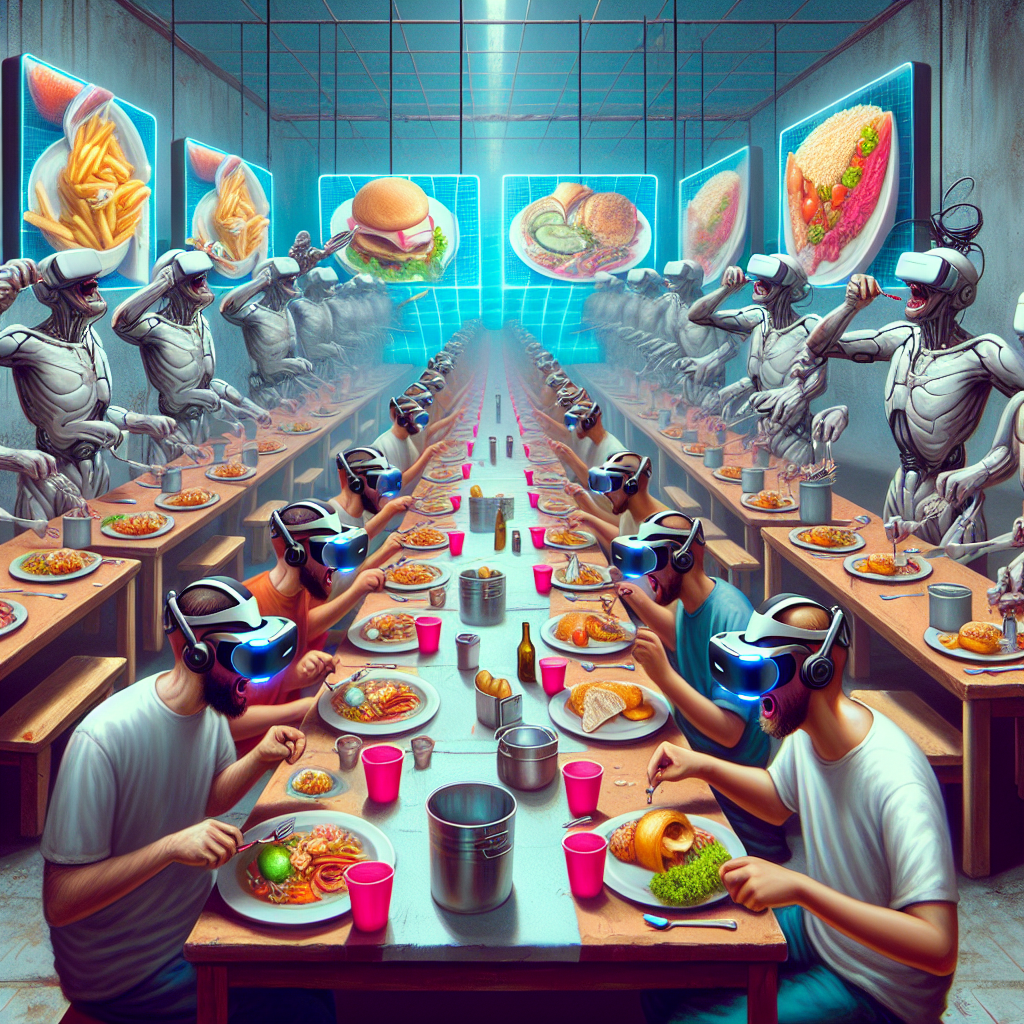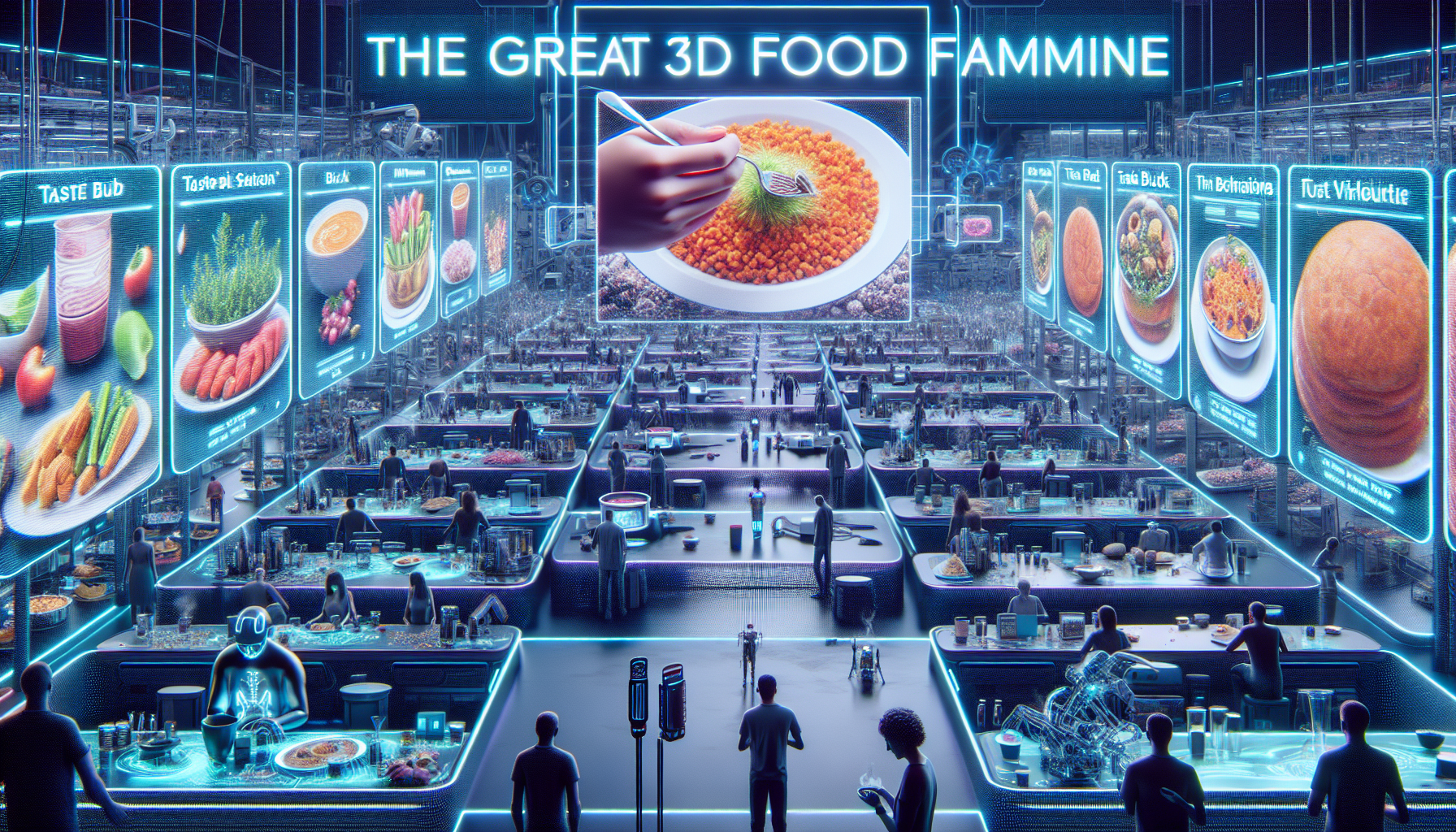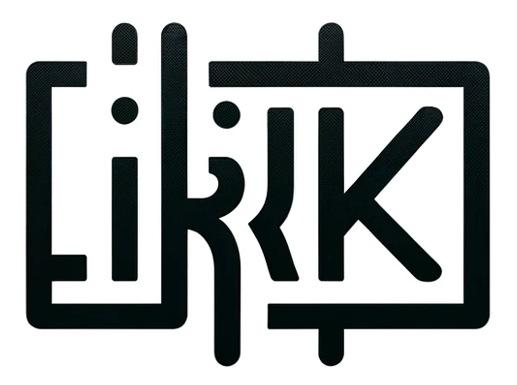
The Great 3D Food Famine: When Virtual Meals Fill Your Stomach, but Not Your Plate (And the Rise of Taste Bud Hacks)
The Great 3D Food Famine is a phenomenon that has been gaining traction in recent years. With the rise of virtual reality and 3D printing, it is now possible to create food that looks and tastes like the real thing, but without the need for traditional ingredients. This has led to a new type of food experience, one that is both exciting and potentially dangerous. In this article, we will explore the implications of this new technology, as well as the potential for taste bud hacks to make virtual meals even more enjoyable. We will also discuss the ethical implications of this technology and how it could affect the future of food. Finally, we will look at how this technology could be used to help those in need.
How the Great 3D Food Famine is Changing the Way We Eat: Exploring the Impact of Virtual Meals on Our Health and Well-Being
The Great 3D Food Famine is a phenomenon that is changing the way we eat and the way we think about food. With the rise of virtual meals, more and more people are turning to 3D-printed food as a way to get their daily nutrition. But what are the implications of this new technology on our health and well-being?
The first thing to consider is the nutritional value of 3D-printed food. While it may be convenient and easy to prepare, it is important to note that 3D-printed food is not nutritionally equivalent to traditional meals. 3D-printed food is often made from processed ingredients, which can lack essential vitamins and minerals. Additionally, 3D-printed food is often high in sodium and sugar, which can lead to health problems if consumed in excess.
Another concern is the environmental impact of 3D-printed food. The production of 3D-printed food requires a significant amount of energy and resources, which can have a negative impact on the environment. Additionally, 3D-printed food is often packaged in plastic, which can contribute to plastic pollution.
Finally, it is important to consider the psychological impact of 3D-printed food. Eating 3D-printed food can be a lonely experience, as it lacks the social aspect of traditional meals. Additionally, 3D-printed food can be less satisfying than traditional meals, as it lacks the flavor and texture of real food.
Overall, the Great 3D Food Famine is changing the way we eat and the way we think about food. While 3D-printed food can be convenient and easy to prepare, it is important to consider the nutritional, environmental, and psychological implications of this new technology. By understanding the potential risks and benefits of 3D-printed food, we can make informed decisions about our health and well-being.
The Pros and Cons of Taste Bud Hacks: Examining the Benefits and Drawbacks of Using Technology to Enhance Our Eating Experiences

Taste bud hacks are a relatively new technology that promises to revolutionize the way we experience food. By using a combination of sensors, software, and hardware, these hacks can alter the way we perceive the taste of food. While this technology has the potential to enhance our eating experiences, it also comes with some drawbacks. In this article, we will explore the pros and cons of taste bud hacks to help you decide if this technology is right for you.
Pros
The most obvious benefit of taste bud hacks is that they can make food taste better. By altering the way we perceive the taste of food, these hacks can make even the most mundane dishes more enjoyable. Additionally, taste bud hacks can be used to reduce the amount of sugar, salt, and fat in food without sacrificing flavor. This can be especially beneficial for those who are trying to maintain a healthy diet.
Another advantage of taste bud hacks is that they can be used to create unique flavor combinations. By combining different flavors, these hacks can create entirely new taste experiences. This can be especially useful for chefs who are looking to create new and exciting dishes.
Cons
One of the biggest drawbacks of taste bud hacks is that they can be expensive. The cost of the hardware and software needed to create these hacks can be prohibitively expensive for some people. Additionally, the technology is still relatively new, so it may not be available in all areas.
Another potential downside of taste bud hacks is that they can be difficult to use. The technology is still in its early stages, so it may take some time to get used to the controls and settings. Additionally, the results may not always be consistent, so it may take some trial and error to get the desired effect.
Conclusion
Taste bud hacks have the potential to revolutionize the way we experience food. By altering the way we perceive the taste of food, these hacks can make even the most mundane dishes more enjoyable. However, they can also be expensive and difficult to use. Ultimately, it is up to you to decide if the benefits of taste bud hacks outweigh the drawbacks.
Exploring the Future of Food: What Will the Great 3D Food Famine Mean for the Future of Food Production and Consumption?
The future of food production and consumption is uncertain, but one thing is certain: the great 3D food famine is coming. This famine is caused by a combination of factors, including climate change, population growth, and the increasing demand for food. As a result, food production and consumption will have to change drastically in order to meet the needs of the growing population.
The most obvious change will be the increased use of 3D printing technology to produce food. 3D printing technology has already been used to create a variety of food products, including pizza, chocolate, and even ice cream. This technology has the potential to revolutionize the way food is produced and consumed. By using 3D printing, food can be produced quickly and efficiently, with minimal waste. Additionally, 3D printing can be used to create custom food products, allowing for greater variety and customization.
However, 3D printing is not the only solution to the great 3D food famine. Other technologies, such as hydroponics and aquaponics, can also be used to produce food in a more sustainable manner. Hydroponics and aquaponics are both methods of growing plants without soil, using water and nutrients instead. These methods are more efficient than traditional farming, as they require less water and energy. Additionally, they can be used to grow a variety of crops, including fruits, vegetables, and grains.
Finally, the great 3D food famine will also require changes in the way food is consumed. As the population grows, it will become increasingly important to reduce food waste. This can be done by encouraging people to buy only what they need, and to use leftovers in creative ways. Additionally, food waste can be reduced by composting, which turns food waste into a valuable resource.
The great 3D food famine will undoubtedly have a major impact on the future of food production and consumption. However, with the right technologies and strategies, it is possible to create a more sustainable and efficient food system. By utilizing 3D printing, hydroponics, aquaponics, and other technologies, as well as reducing food waste, it is possible to create a future where everyone has access to the food they need.
Conclusion
The Great 3D Food Famine has highlighted the potential of virtual meals to fill our stomachs, but not our plates. While this technology has the potential to revolutionize the way we eat, it also raises questions about the ethics of taste bud hacks and the potential for food companies to manipulate our taste buds. Ultimately, it is up to us to decide how we want to use this technology and how we want to shape the future of food.
You may also like
17 comments
Leave a Reply Cancel reply
Archives
Calendar
| M | T | W | T | F | S | S |
|---|---|---|---|---|---|---|
| 1 | 2 | 3 | 4 | 5 | ||
| 6 | 7 | 8 | 9 | 10 | 11 | 12 |
| 13 | 14 | 15 | 16 | 17 | 18 | 19 |
| 20 | 21 | 22 | 23 | 24 | 25 | 26 |
| 27 | 28 | 29 | 30 | 31 | ||

Great work! This is the type of info that should be shared around the internet. Shame on Google for not positioning this post higher! Come on over and visit my website . Thanks =)
WONDERFUL Post.thanks for share..more wait .. …
Definitely believe that which you stated. Your favorite reason seemed to be on the net the easiest thing to be aware of. I say to you, I definitely get annoyed while people consider worries that they plainly don’t know about. You managed to hit the nail upon the top and defined out the whole thing without having side effect , people could take a signal. Will probably be back to get more. Thanks
I’ll immediately snatch your rss feed as I can not to find your e-mail subscription link or newsletter service. Do you’ve any? Please permit me recognize so that I could subscribe. Thanks.
I am continually searching online for ideas that can facilitate me. Thx!
Greetings! Very helpful advice on this article! It is the little changes that make the biggest changes. Thanks a lot for sharing!
Nice read, I just passed this onto a friend who was doing a little research on that. And he just bought me lunch because I found it for him smile So let me rephrase that: Thank you for lunch! “Procrastination is the thief of time.” by Edward Young.
Very interesting subject, thanks for putting up.
certainly like your web site but you need to check the spelling on several of your posts. Several of them are rife with spelling issues and I find it very troublesome to tell the truth nevertheless I’ll definitely come back again.
You are a very smart individual!
me encantei com este site. Pra saber mais detalhes acesse o site e descubra mais. Todas as informações contidas são conteúdos relevantes e exclusivas. Tudo que você precisa saber está está lá.
demais este conteúdo. Gostei bastante. Aproveitem e vejam este conteúdo. informações, novidades e muito mais. Não deixem de acessar para saber mais. Obrigado a todos e até mais. 🙂
Este site é realmente demais. Sempre que acesso eu encontro coisas boas Você também vai querer acessar o nosso site e saber mais detalhes! conteúdo único. Venha saber mais agora! 🙂
Its great as your other blog posts : D, regards for posting. “I catnap now and then, but I think while I nap, so it’s not a waste of time.” by Martha Stewart.
Great line up. We will be linking to this great article on our site. Keep up the good writing.
Simply desire to say your article is as amazing. The clearness in your post is just excellent and i could assume you’re an expert on this subject. Well with your permission allow me to grab your feed to keep up to date with forthcoming post. Thanks a million and please carry on the enjoyable work.
I was more than happy to search out this web-site.I wished to thanks in your time for this wonderful read!! I definitely enjoying each little little bit of it and I’ve you bookmarked to take a look at new stuff you weblog post.